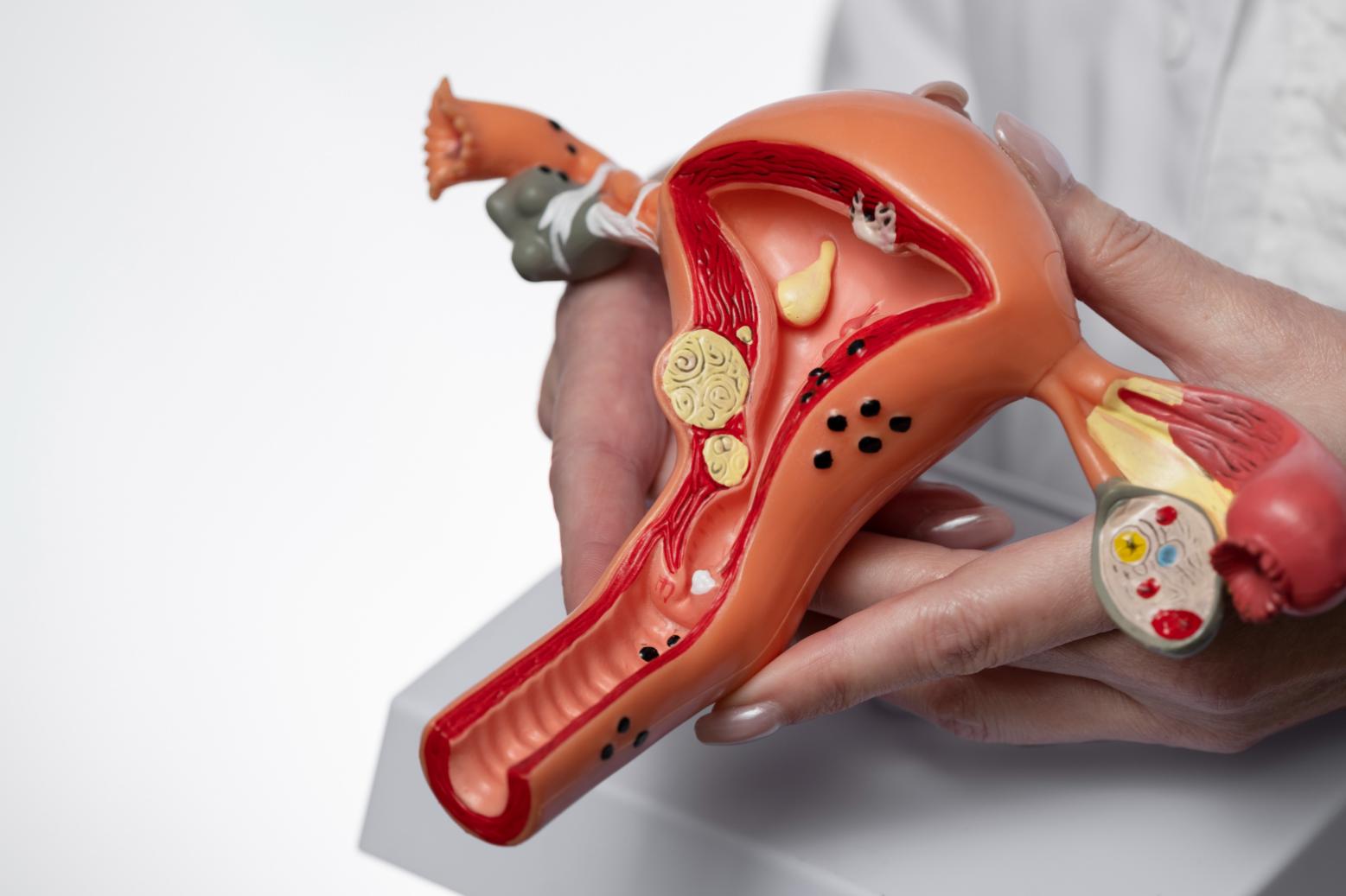
The uterus is lined with a special tissue called the endometrium. The endometrium is a dynamic tissue that undergoes a series of alterations like proliferation, secretion and shedding during the menstrual cycle in a woman’s reproductive years. The abnormal thickening of this lining is called Endometrial Hyperplasia. Unusual uterine bleeding is the major cause of this medical condition and it is mostly seen in postmenopausal women. The four types of Endometrial Hyperplasia are Simple Endometrial Hyperplasia, Complex Endometrial Hyperplasia, Simple Atypical Endometrial Hyperplasia, and Complex Atypical Endometrial Hyperplasia based on the amount of abnormal cells and cell changes. Simple Hyperplasia can go away on its own or with hormonal treatment.
Endometrial Hyperplasia is caused by either too much estrogen or not enough progesterone. During a menstrual cycle, estrogen makes the cells grow, while progesterone signals the shedding of the cells. When there is a hormonal imbalance the cells produced can be too many or abnormal. Apart from excessive bleeding the other symptoms of Endometrial Hyperplasia can include shorter menstrual cycles (less than 21 days), heavy and long bleeding during menstrual cycle, menstrual bleeding between menstrual periods, not having a period (pre-menopause) and post-menopause uterine bleeding.
Endometrial Hyperplasia is not cancer but when the hyperplasia is atypical it could lead to cancer of the womb. Atypical Endometrial Hyperplasia is a premalignant condition that usually affects older women (after menopause). But it can develop in younger women if they are obese or suffer from chronic ovulatory dysfunction. There is a likelihood of an atypical hyperplasia to turn cancerous; 20 years after diagnosis in 28 out of 100 women.The risk of progression from Atypical Hyperplasia to cancer is pegged at 52 percent. But hysterectomy can cure this completely if it is done before the cancer develops.
Endometrial Hyperplasia cannot be diagnosed by just a blood test or an ultrasound. To ascertain Endometrial Hyperplasia, a combination of invasive diagnostic tests can be done. Transvaginal ultrasound that involves placing a small device in the vagina that turns sound waves into pictures on a screen, Hysteroscopy that involves inserting a small device with a light and camera into your uterus through your cervix or biopsy testing and analysis of a small tissue sample of your uterus.
Administering progestin in the form of pill, shot, vaginal cream, or intrauterine device is the most common treatment for Endometrial Hyperplasia. While Endometrial Hyperplasia cannot be prevented; small changes can help lower your risk like losing weight, eating healthy and avoiding endocrine disrupting diets, taking progestin medication or taking birth control tablets to regulate hormones and menstrual cycle.
Around 30% of the women who have endometrial overgrowth have been found to achieve pregnancy after discussing therapy options like assisted reproductive technologies with specialists. But as the condition progresses, the treatments required to repair the issue could affect the ability to get pregnant. The uterus and ovaries have many important lifelong functions and hence seeking immediate medical attention once you have been diagnosed with Endometrial Hyperplasia is integral.
For enquiries related to Endometrial Hyperplasia, send a message to www.KJKHospital.com/contact








